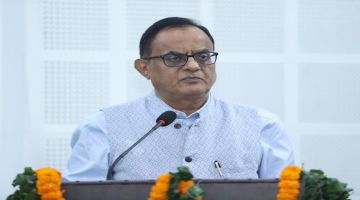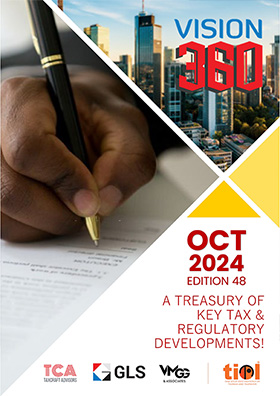UPA Govt all set to roll out Direct Cash Transfer Scheme from tomorrow
By TIOL News Service
NEW DELHI, DEC 31, 2012: THE UPA Govt is all set to roll out from tomorrow the Direct Cash Transfer in 43 identified districts. The purpose of Direct Benefits Transfer is to ensure that benefits go to individuals bank accounts electronically, cutting down delays and diversions.
A lot of preparatory has been done and a lot of work is ongoing in connection with the rollout. Secretaries and their officers have visited all 43 districts to assess the preparedness for rollout of Direct Benefits Transfer. A meeting of District Collectors was held on 13 December 2012 to inform them about the steps to be taken for timely rollout of Direct Benefits Transfer. Review meetings have been taken by the Prime Minister to ensure preparations are moving ahead smoothly.
What is Direct Benefits Transfer and what does it cover:
1. Government will transfer cash benefits like scholarships, pensions, NREGA wages, etc. directly to the Bank or Post Office Accounts of identified beneficiaries under the Direct Benefits Transfer (DBT) programme. The shift to this would done in a phased, time-bound manner after ensuring that the necessary systems are in place for Direct Benefits Transfer.
2. Direct Benefits Transfer will not be a substitute for delivery of public services which would continue to take place as per the normal delivery channels.
3. Direct Benefits Transfer will not replace food with cash under the Public Distribution System. The Government is committed to legislating the National Food Security Act.
What does Rollout on 1.1.2013 mean in practice:
4. For the rollout beginning on 1.1.2013, 43 districts in 16 States have been identified for the first round of Direct Benefits Transfer under 26 selected schemes. The selection of 43 districts has been done on the basis of coverage of bank accounts and Aadhaar.
5. The rollout has been phased based on:
(a) The next instalment being due either on 1.1.2013 or at a later date.
(b) The list of beneficiaries being digitized in the district concerned.
(c) The opening of bank accounts for beneficiaries in the district concerned.
(d) Enrolment for Aadhaar numbers in the district concerned.
(e) Seeding of bank accounts with Aadhaar numbers in the district concerned.
(f) Availability of funds.
6. Based on the level of preparedness and the ongoing nature of the rollout, Direct Benefits Transfer will begin to take place from 1st January, 2013 as follows:
i. There will be a Direct Benefit Transfer on 1.1.2013 through a cash transfer into beneficiaries` bank accounts in 7 schemes. These schemes are spread over districts as below:
a.Post-matric scholarship for SC students - 7 districts; 48,000 beneficiaries
(Puducherry, Nawanshahr, Fatehgarh Sahib, Gurdaspur, Anantpur, East Godavari, Diu)
b. Pre-matric scholarship for SC students - 1 district; 24,000 beneficiaries
(East Godavari)
c. Post-matric scholarship for OBC students - 6 districts; 105,000 beneficiaries (Puducherry, Alwar, Anantpur, East Godavari, Daman, North Goa)
d. Post-matric scholarship for ST students - 3 districts; 4,800 beneficiaries
(Tumkur, Waynad, Harda)
e. Indira Gandhi Matrutva Sahayata Yojana - 6 districts; 55,000 beneficiaries (Dharwar, Puducherry, NW Delhi, Diu, North Goa, Amaravati)
f. Dhanalakshmi Scheme - 1 district; 8,000 beneficiaries
(Fatehgarh Sahib)
g. Stipend to trainees under the scheme of welfare of SC/ST job seekers through Coaching-cum-Guidance and Vocational Training - 10 States, 650 beneficiaries
(Karnataka, Kerala, Haryana, Punjab, Delhi, MP, Rajasthan, AP, Maharashtra, Jharkhand)
On 1.1.2013, over 2 lakh beneficiaries will start receiving benefits through Direct Benefits Transfer.
ii. In 20 of the 43 districts, all future benefits transfers under all the 26 schemes, whenever they are due after 1.1.2013 as per their cycle, will be through Direct Benefits Transfer. There will be some phased rollout in a few schemes in some of these districts. In a sense, these 20 districts go "live" for Direct Benefits Transfer from 1.1.2013.
iii. In 11 of the 43 districts, all future benefits transfers under all the 26 schemes, whenever they are due after 1.2.2013 as per their cycle, will be through Direct Benefits Transfer. In a sense, these 11 districts go "live" for Direct Benefits Transfer from 1.2.2013.
iv. In the remaining 12 of the 43 districts, all future benefits transfers under all the 26 schemes, whenever they are due after 1.3.2013 as per their cycle, will be through Direct Benefits Transfer. In a sense, these 12 districts go "live" for Direct Benefits Transfer from 1.3.2013.
v. By 1.3.2013, Phase 1 of Direct benefits Transfer would have rolled out in all 43 districts and all benefits would be flowing electronically to beneficiaries accounts in the 43 districts as and when their payments become due.
7. It may be the case that not all 26 schemes may be present in all the 43 districts. Further, under some of the 26 schemes, the next installment will be due only next financial year.
Other Arrangements for Direct Benefits Transfer
8. Direct Benefits Transfer from the Centre will take place either directly to the account of the beneficiary or through the State Government into the account of the beneficiary.
9. Withdrawal arrangements are being strengthened. Initially beneficiaries will be able to withdraw from their own bank branches or ATMs or Business Correspondents (BCs) wherever they exist. The system of micro-ATMs and multiple BCs will roll out subsequently with full inter-operability gradually. The one lakh Common Service Centers set up by the Department of IT are being engaged to serve as a BC in Gram Panchayats where BCs are not functional today. Banks have also been asked to expand their reach to provide banking services to every 1000-1500 households through a BC or CSC. Work is being done to make the BCs interoperable over a period of time. Banks have floated a tender for 20 lakh Micro-ATMs which will be inter-operable and will have facility for biometric scanning and Aadhaar authentication.
Next Steps in Rollout
10. Once the programme has stabilized in these 43 districts, it will be rolled out in phases in other parts of the country over 2013 after a careful assessment of readiness.
11. Direct Transfer of Subsidies for food, fertilizer and kerosene is not being contemplated at present. This will take more time as the issues of entitlement are more complex.














